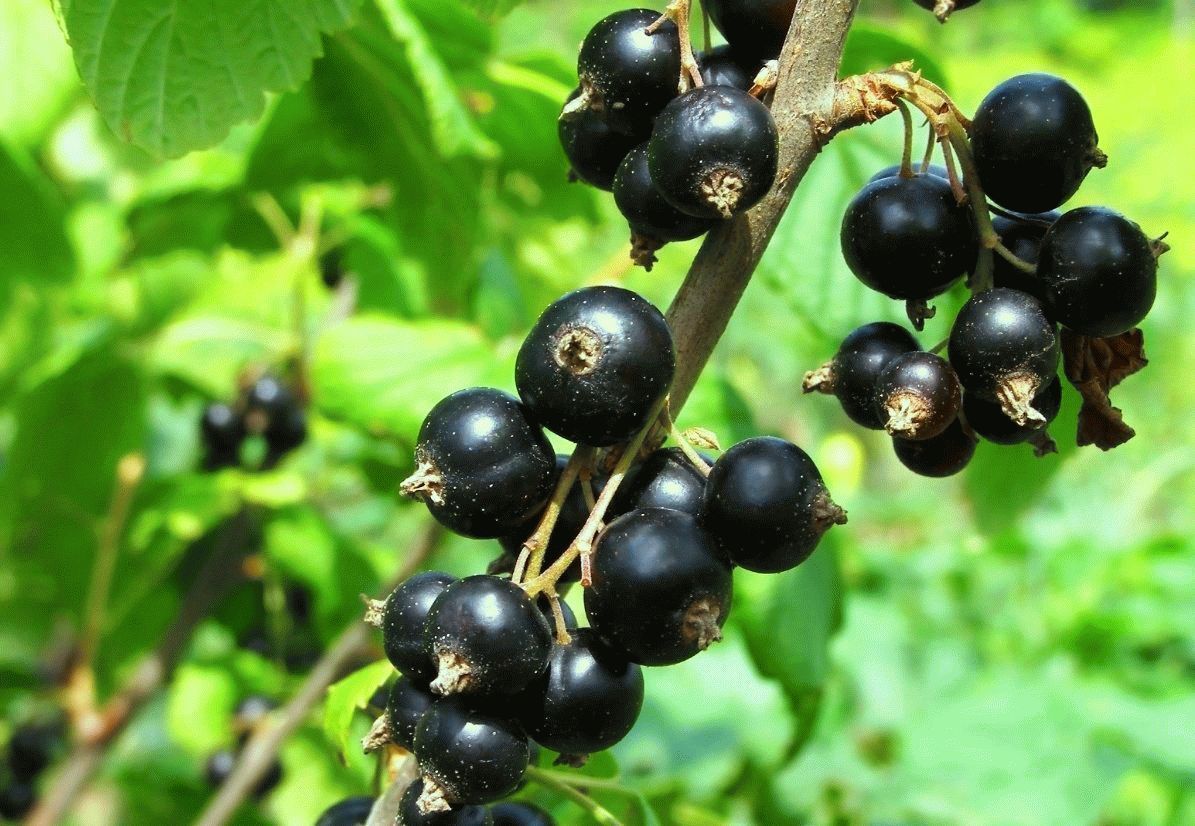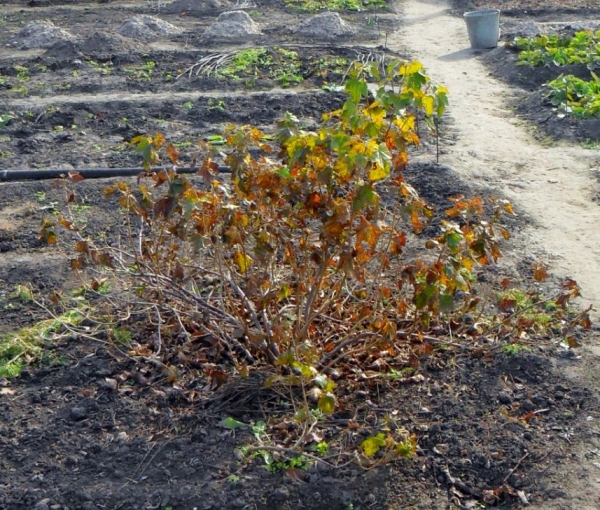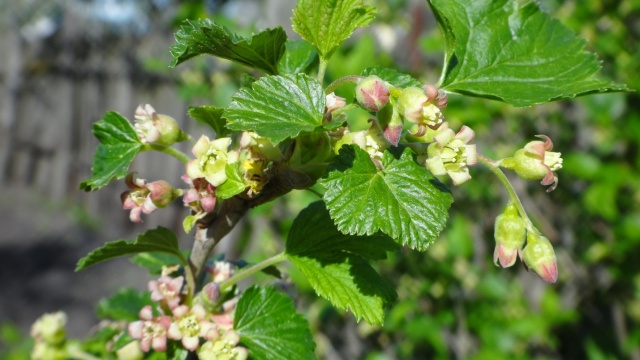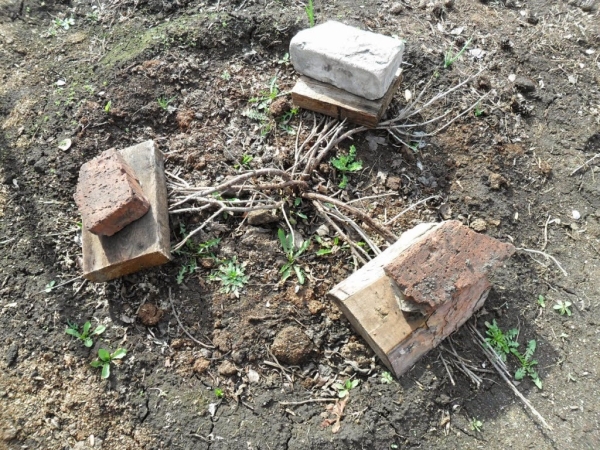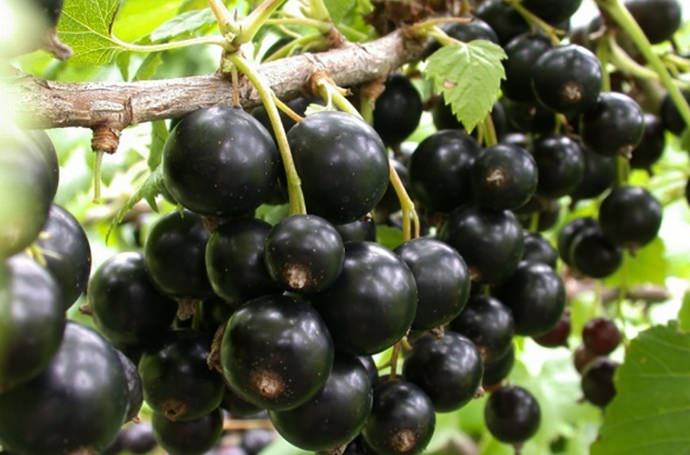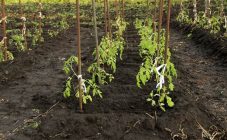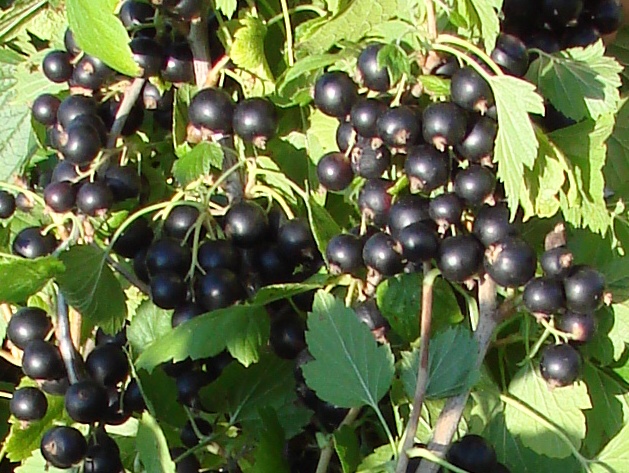Content:
In order to grow currants, you need to choose the right place, prepare the soil and plant the seedlings correctly. If you do all this correctly, black currants will delight you with an excellent harvest. The article describes in detail how to plant blackcurrant seedlings.
Demanding soil preparation
There is no main branch in the root system of the currant. Therefore, it usually grows in all directions more or less evenly. To ensure the development of this type of roots, pre-planting soil cultivation is very important. In this case, it is worth considering what kind of soil the black currant likes. Loosening and applying the necessary fertilizers also play an important role.
If minor damage to the roots occurs during the work, then this should not be a cause for concern. The roots of currants, both black and red, heal quickly enough.
In spring, the soil is such that the most optimal conditions for the growth and development of currant bushes are provided, which is what black currant loves.
The optimal time for planting is considered to be the autumn period. Although, if the bushes did not have time to develop, they are quite capable of successfully overwintering and continuing to grow in the spring of next year.
Important! Do not plant currants next to gooseberries - these plants have common diseases and pests.
In the process of development of the root system, their vertical parts penetrate into the soil, in most cases using the passages in the soil that were previously dug by earthworms.
Currant is a typical plant of the middle lane. At the same time, this is one of the reasons why the plant is demanding on moisture. Shrubs also grow naturally. Moreover, they are usually found on the banks of rivers, in those areas where there are wetlands.
Since the root system does not penetrate deeper than 60 centimeters into the ground, currants can grow even in places where there is only a thin layer of soil.
The plant is very sensitive to the composition of the soil where it grows. If the land for currants is provided with a sufficient amount of nitrogen, potassium and phosphorus, then this will have a beneficial effect on the harvest. If you provide nutrients with the help of fertilizers, then the shrub is able to assimilate them even in the presence of a high concentration.
Fertile soils are believed to be optimal for cultivation, the acidity of which is approximately equal to 6-6.5 units. The plant reacts more strongly to the quantity and quality of fertilizers than many others.
Some of their types can affect certain characteristics, given what soils are needed for currants:
- If there is enough nitrogen fertilization in the soil, then this has a positive effect on increasing the size of the berries. In addition, this fertilizer can significantly increase the yield of black currant. If they are lacking, then growth slows down, and the leaves become smaller. Moreover, in August, small leaves acquire a distinct reddish tint. When using nitrogen fertilizers, both mineral and organic forms must be used;
- The use of potash fertilizers can affect the flavor of the berries. As the content increases, it becomes sweeter. If this type of fertilizer is not enough, then a clearly visible border is formed on the leaves, which has a yellow color. Potassium chloride is thought to cause plant burns.For this reason, it is recommended to use potassium sulfate;
- The availability of phosphorus fertilizers also plays an important role. If they are not enough, this can have unpleasant consequences for the plant. This can negatively affect the size of the berries, yield. Leaves can become small and blotchy.
Soil preparation
Different species of this plant have different requirements for the quality of the soil in which they will grow. One of the differences between black currants is that they have high requirements for soil fertility and for sunlight. First of all, this is due to the fact that the roots of the bushes are located shallow and reach only the border of humus and sod-podzolic soil.
When planting currants in the garden, landscaping can help increase yields. One option is to plant a row of plants to protect from the wind. For this purpose, you can use, for example, corn.
Weed control
It is not recommended to simply plant black currants in a new and unprepared area. It is necessary to deal with this issue in advance, several months or years in advance.
It will be useful for currants if row crops or some perennial plants grew on this site. It is bad if there was wheatgrass on the site.
Important! It is necessary to remove all weeds from the site in advance, periodically repeating the cleaning procedure.
Digging and digging
About a month before the currants are planted, you need to dig up the soil. The working depth should be approximately 25 centimeters.
At the same time it is necessary to apply the fertilizers necessary for plant growth.
When planting is done, the trunk is placed in such a way that it is buried a few centimeters in the ground, this leads to a more intensive growth of the root system.
Fertilizers
The use of fertilizers is determined by the fertile qualities of the soil. To take into account what kind of soil blackcurrant likes, you need to apply the right fertilizer.
If the cultivation takes place on those soils that are poor in nutrients, fertilizing with fertilizers must be done comprehensively and to the maximum extent. The introduction is carried out once. During the entire period of the plant's life, the bush will use the useful elements of the fertilizers obtained from the soil.
It is recommended that the treatment be carried out three to four months before the bushes are planted in the soil. At the same time, they try to apply a sufficient amount of potash, phosphorus and organic fertilizers. It is believed that chlorine-free formulations will be more effective for growing. Examples include: potassium magnesium, as well as potassium sulfate.
In some cases, the soils used for currants can be characterized as having an average nutrient content. When fertilizing them, the corresponding doses must be reduced. In this case, phosphorus and potassium are put in a quarter less.
If currants are grown on those soils where there is a high content of substances necessary for the plant, in this situation it is necessary to apply a dose that is about half of the amount that is used for poor soils.
Nitrogen fertilization is required on an annual basis. This is usually done in early spring. For them, they dig holes up to twelve centimeters deep along the rows of black currant bushes. The amount depends on the stage of growth of the currant. When planting bushes, 60 grams per ten square meters is enough. If the plants are older, then it is customary in this case to increase the amount to 120 grams.
If the soil is characterized by high acidity, then preliminary treatment must be carried out in this regard. Usually liming is carried out for this purpose, and it is better to do this about three years before the currant is planted. Lime is used for this purpose. On average, it is customary to take 4 kilograms per ten square meters. A more accurate value is determined based on data on the hydrolytic acidity of the soil.
The influence of alkaline soil is such that high-quality liming of the soil can increase yields by at least 35%.
Landing
It is necessary to plant seedlings in carefully dug and loosened soil. The place should be well lit and protected from cold winds. Being in partial shade can reduce crop yields.
Interesting. It is desirable that the soil on the site be light or sandy loam.
For planting seedlings, a pit for currants must be prepared in advance. It is best when the depth is 40 centimeters, and the length and width are 60 centimeters.
It is believed that it will be more effective if, when planting, currant seedlings are positioned obliquely, at an angle of 45 to 60 degrees. Usually, this operation is performed together. In this case, one person lays the sprout in the desired position, and the other pours the earth. This planting method leads to a particularly intensive growth of the root system.
When digging holes, the fertile layer is placed on one side, the rest of the soil on the other. We will tell you what to put in the hole when planting currants. When planting, the roots are carefully laid out on the ground and covered by three quarters of fertile soil mixed with fertilizers. The rest is covered with the rest of the earth.
Planting material must be buried in the soil by about eight centimeters. Bushes are planted in beds, at a certain distance. It depends on the type of plant. There are more spreading or compact varieties of currants.
When planting plants in autumn, fertilizers are placed fourteen days before planting. During this period, the land is gradually laid down and has time to settle.
It is necessary to water each plant at this time. To do this, you can spend half a bucket of water for each sprout. A small ditch is made around the garden bed. Plants are mulched with humus in order to prevent crusting on the ground.
Do I need to dig in currants in the spring? Yes, this will create conditions for more effective development of the root system.
Soil care
The site must be cleared in advance not only of debris, but also of weeds. It is advisable to start processing several years in advance. In this case, it is necessary to periodically remove the germinated weeds. The landing site should not be in the shade of a house or fence.
The size of the planting holes depends on the volume of the seedling root system. It should be one and a half or two times more in width and depth.
Most of the roots are in the upper layer. Therefore, thinking about how best to prepare the soil for planting currants, before planting it is necessary to dig up the ground to the full depth, where the roots will be located. In this case, it is necessary to mix the soil with organic fertilizers. For this they take a ton per hundred square meters of land.
Important! In order not to acidify the earth, it makes sense to liming the soil.
If preliminary processing was not carried out, then you need to dig each hole a little deeper and fill in the lower part a little earth mixed with fertilizers.
Preparing the land for frost
Currants are considered a fairly frost-resistant plant. However, the degree of resistance to cold weather is determined by the specific growth conditions.
This significantly depends on the plant variety and on the composition of the soil in which you have to winter:
- In severe frosts, branches may die off. How to protect currants from frost? To prevent this from happening, they are bent to the ground (usually pressed down with stones). In especially severe frosts, branches are buried in the ground;
- After the leaves fall off, the old and diseased branches are cut off;
- You can spray the plant with special solutions before the leaves fall off. This method of disinfection is considered effective. Cleaning the ground and digging up the soil will also help get rid of wintering pests;
- Additional fertilization can be applied before the onset of winter.
After carrying out all the processing, the surface of the earth must be covered with fresh mulch.
Thinking whether it is necessary to dig in black currants in the spring, you need to understand that in this way the development of the root system is assisted.
